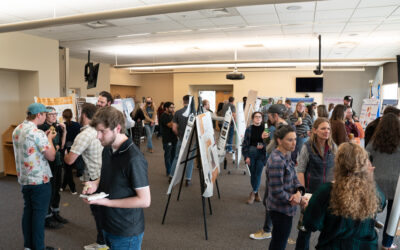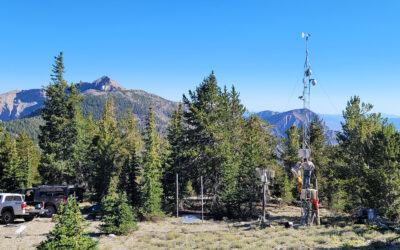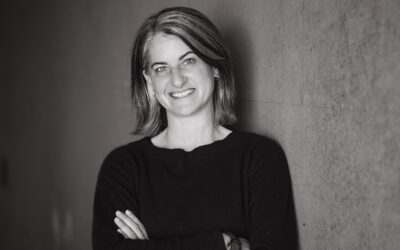A Q&A with researcher Brianda Hernandez Rosales
Brianda Hernandez Rosales, M.Sc., is the Water Quality Program Coordinator for the Bishop Paiute Tribe and a research assistant for the Native Waters on Arid Lands (NWAL) project, a coalition group that partners research scientists with indigenous communities across the Western U.S. Last May, she earned her master’s degree in Hydrology from the Graduate Program of Hydrologic Sciences at the University of Nevada, Reno. She published her thesis work “Assessing the Feasibility of Rooftop Rainwater Harvesting for Food Production in Northwestern Arizona on the Hualapai Indian Reservation” in the journal Sustainability in February.
As the Southwest continues to experience drought, renewable water resources are crucial in ensuring climate resilience and food security for rural communities. In this interview, researcher Brianda Hernandez Rosales breaks down rainwater harvesting (RWH) and its role in indigenous food sovereignty in the face of climate change. This interview was lightly edited for length and clarity.
DRI: What led you to work with Native Waters on Arid Lands?
Brianda: I started graduate school in 2020, at the height of the pandemic. Dr. Alexandra Lutz was my advisor. She and Dr. Maureen McCarthy started Native Waters on Arid Lands in 2015. What they do is work with indigenous communities across the West to partner them with research scientists that want to provide their skill sets to these communities to help them become more climate resilient. Dr. Lutz was the one who suggested I work with the coalition group, because she knew I wanted to do applied research and work with underserved communities.
Following my graduate research, they asked me if I could produce videos to share my findings about rainwater harvesting. The plan is to put them on their website for interested parties, either tribal communities, liaisons for the government, or other researchers, so they can see what I did and decide if they want to do it too. There will be a total of six DIY videos based off my research. The videos will cover: The project overview, rainwater harvesting equation, introduction to the AquaCrop model, the area that can be cultivated solely using the captured rainwater, the cost and maintenance of a rainwater harvesting system, and an example from my research.
DRI: What is climate resilience and why is research in climate resiliency important in the face of climate change, especially for tribal communities?
Brianda: Climate resiliency is preparing communities for the effects of climate change. These impacts are happening now, and they are going to continue happening and are going to get worse. But what this would do is prepare these communities to have the resources and the tools for them to reduce their impacts. Tribal and other rural communities do not have the funding and resources available to state and federal agencies. A lot of science and research focuses on big metropolitan cities, so a lot of these resources are shifted towards that instead of the communities that might need it the most. Some of the issues rural communities face include water quality, water quantity, food deserts and a lack of food sovereignty.
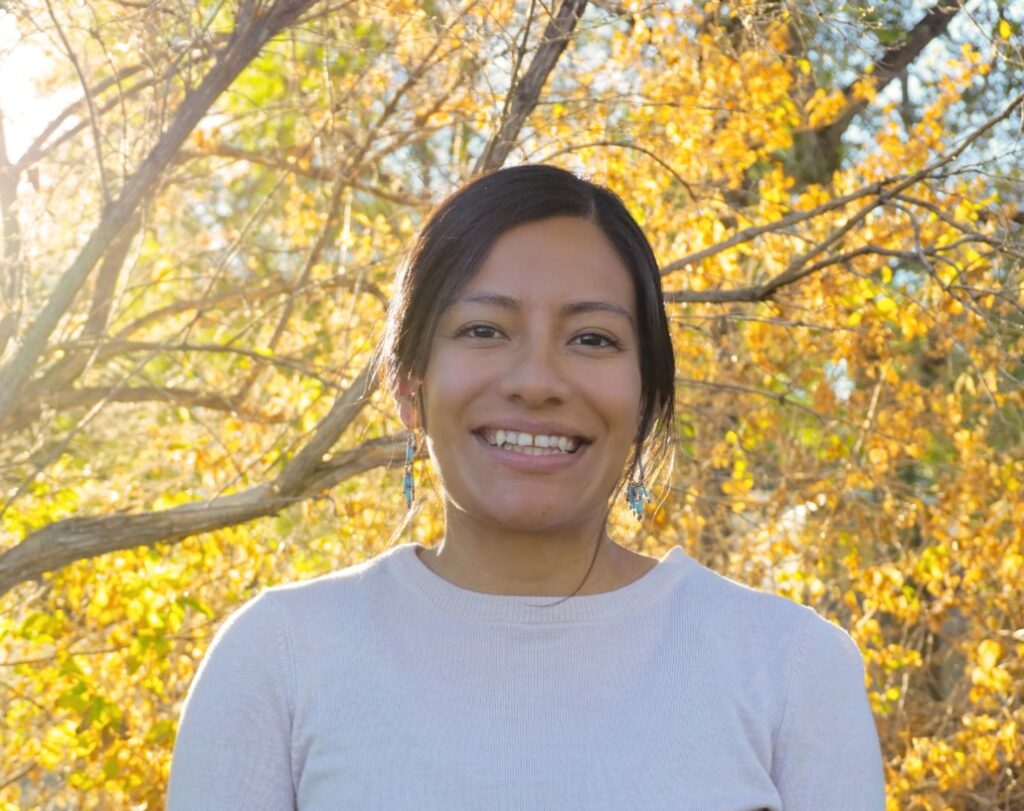
Brianda Hernandez Rosales, M.Sc. Credit: Native Waters on Arid Land
DRI: What advice do you have for scientists working with tribal communities?
Brianda: One of the most important things is to learn to listen. We have been trained as scientists to follow these specific methods for us to get to the answer or to get to something that we’re looking for. But I think one of the biggest things is to listen and help address the questions that people are asking you to address. In my research, the Federally Recognized Tribal Extension Program Agent (FRTEP) for the Hualapai in northwestern Arizona had approached us with this question: “We have a new building, and we’re wondering if it’s feasible to collect rainwater. Can you make an assessment?” And so that’s where my research came in. I did this feasibility study that looked at past and future climate to see if it’s cost effective to implement a rainwater harvesting system on the reservation. Scientists have these large skill sets that we can provide to communities that might need it and if someone needs something answered, I think it’s important for us to be willing to do that. Helping these communities, creating a working relationship, and continuing that open communication and that listening aspect is crucial.
DRI: What was your experience like working for Native Waters on Arid Lands and the Hualapai community?
Brianda: I mainly worked with the FRTEP agent for the Hualapai tribe. But with my work now, working with the Bishop Paiute Tribe, a lot of it is just respecting the culture. Every tribe is different. They are going to have different priorities, different questions they want to answer. There’s a lot of ecological and traditional knowledge that these tribes have and staying open and thinking differently as a scientist broadens the way you approach these different questions and research topics.
DRI: Can you tell me more about your work with the Bishop Paiute Tribe and what you are currently working on?
Brianda: I started with the Bishop Paiute Tribe in October. I was super excited to get this position and it’s been super fun. Working under a tribal government and working with neighboring tribes has been great because it’s very tight knit, but I feel like I still have a lot to learn, and I still have a lot to give to this program. But if it eventually gets to the point where I have exhausted every single thing that I could possibly give – and I don’t know if that will happen anytime soon – I think that I would definitely be interested in working with Hispanic communities. There’s a lot of great work that’s being done, especially in the Central Valley, but I think a lot of it has to come down to advocating for these communities to get access to clean water. So, I’m interested in that.
I am the Water Quality Program Coordinator, so I manage the ambient water on the reservation. That includes monitoring issues affecting water quality in creeks or ponds on the reservation. I am the one who is in charge of addressing those issues, as well as preventing nonpoint source pollution on the reservation waters, education, and outreach, and working with different departments and programs to help environmental efforts meet EPA requirements, as well as the Tribe’s expectations.
DRI: Why is this line of research important to you?
Brianda: When I decided to go for a graduate degree, I wanted to help communities with my research. What satisfies me as a scientist is knowing that my work is helping someone as soon as possible. There is a lot of science that gets propelled forward through all this amazing stuff that people are doing, but for me, I felt like I needed something that was more connected to my community. Luckily, I’ve been able to work with these amazing tribal communities, but there’s also so much going on in the Central Valley with water quality issues and how it’s affecting farmworkers. And maybe it’s a selfish thing for me to think that it’s going to make me feel better about the work that I do, but it makes it easy to get up in the morning and go do it.
The cool thing about working with tribal communities is that because they are sovereign entities, a lot of the red tape that you would get with state agencies or federal agencies can get moved a lot quicker. You probably don’t have the funding. You probably don’t have the staff, but I think it’s kind of fun to try to make it work. It’s a lot of moving pieces, and there’s a lot of things that I’m still learning and will continue to learn – I don’t think I’ll ever stop learning while working with these communities. It’s a different way of seeing things. As a scientist you can see a creek and know this is the data, this is what we’re seeing, but then you can also work with people that look at the whole thing; like the plants, how they’re communicating with each other or different information that’s being exchanged.

Brianda collects water samples in the South Fork of Bishop Creek. Credit: Sabrina Barlow
DRI: What do you hope for in terms of climate resiliency in the Southwest’s future?
Brianda: When it comes to drought, I think we need to be prepared to mitigate dry years, through methods like rainwater harvesting. Infrastructure is a big part of this, we need to design new buildings that you can harvest water from. For scientists, engineers, and communities, innovation will be one of the major things that will prepare us to deal with climate change.
DRI: What is rainwater harvesting, and what makes a building suitable for harvesting rainwater?
Brianda: Rainwater harvesting is the collection and concentration of water into storable equipment that you can then use later. Any surface area can be used for rainwater harvesting, but you do need to be in an environment that gets at least a few inches of rain per year. You need the infrastructure to store that water: A decent surface area, and somewhere to put that water once you’ve concentrated it through gutter systems.
Pretty much any building can sustain rainwater harvesting, but some are better than others. Metal roofs are more efficient because water will flow off them quickly. Wood roofs absorb some of the water, but it’s still possible to collect water from a wood roof. I think one of the biggest things that’s going to drive our resilience to climate change is the ability to store water and rainwater in wet years to save it for other days when we don’t have any.
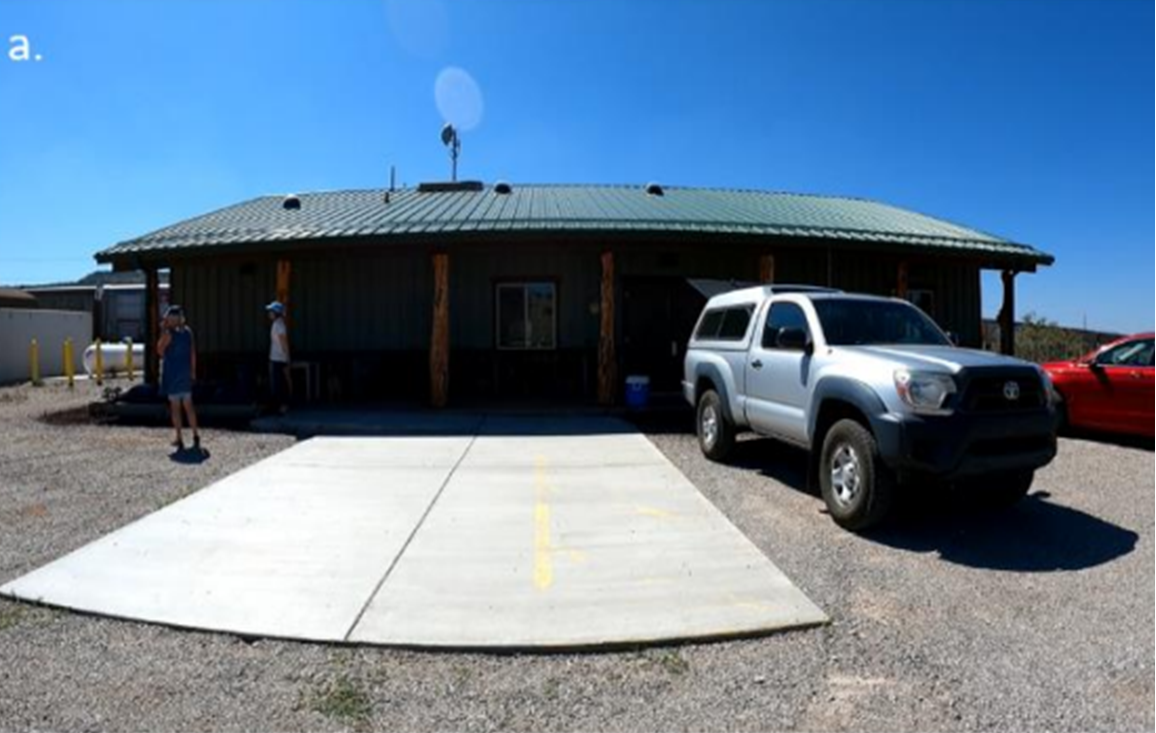
Buildings considered for rainwater harvesting in Peach Springs, Arizona.
Credit: Brianda Hernandez Rosales
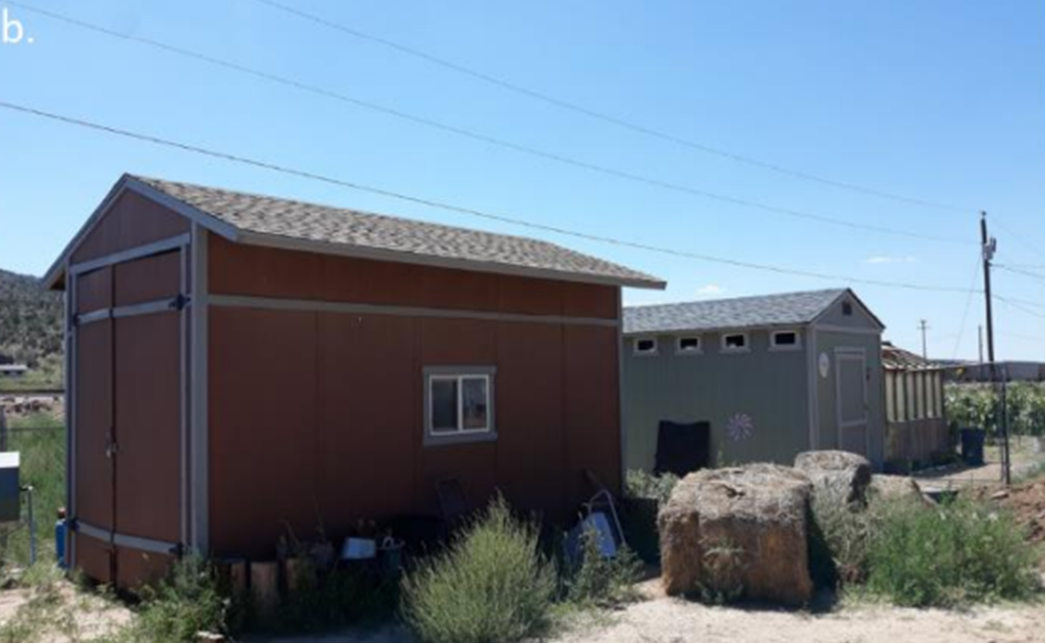
DRI: What types of crops were you looking at, and how much acreage of crops could be potentially harvested using rainwater?
Brianda: When I went to the Hualapai reservation, I was invited to look at their garden, which had corn, sunflowers, and potatoes. I was primarily focused on corn because that is one of the biggest staples in the southwest. When I did the feasibility for their 4-H building, I was able to use this model from the Food and Agriculture Organization (FAO) that looks at local weather patterns and how these impact crop growth and irrigation needs. In the Southwest, we have monsoon rains during the summer season. I looked at dry, wet, and normal precipitation years, to predict how much additional water would be needed to keep crops alive. With the amount of water that we are collecting between May and September of a normal year, about 81 kilograms of corn can be harvested – And that’s just from one building. The Tribe wanted to use this water to irrigate their community garden to maintain food sovereignty. The COVID-19 pandemic exposed these issues in rural communities that don’t have access to healthy and culturally significant foods. The Hualapai reservation is about 50 miles east of the main town, which is Kingman, Arizona. What I discovered with my research was that they could irrigate a decent area for crops using rainwater alone. Of course, this is dependent on how you’re setting up your system, whether you’re using drip irrigation, and how much rain falls during that summer.
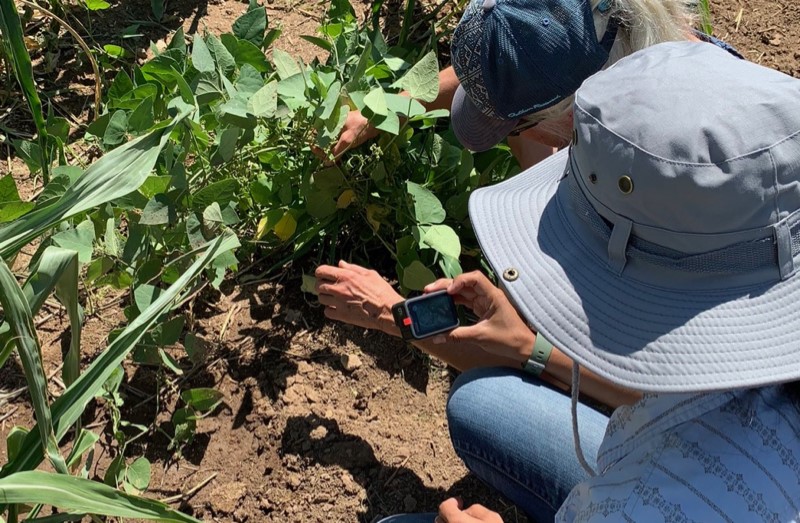
Brianda examining crops in the Hualapai Community Garden. Credit: Native Waters on Arid Land
DRI: How is your research being used by the Hualapai Tribe? Are there any updates on wanting to move forward with your method?
Brianda: The last thing I heard was that they were going to implement this project. The FERTP agent for the Hualapai tribe was super excited. The cool thing about their system is that all they have to do is purchase the cisterns to store the water. Purchasing the cisterns, that’s the most expensive part of a rainwater harvesting system. And then they need to decide how they’re going to distribute that water for irrigation. Their plan is to get their rainwater harvesting equipment in place this spring to hopefully collect some monsoonal rains in the summer.
DRI: Is there anything else important you would like to mention?
Brianda: If you are able to work with communities that need the help – and I say this more towards research students that are struggling to find that path or know exactly what they want to do – I think one of the biggest things is to explore and work with communities that might need it. You might be able to find a passion or a calling. I hope that these videos that I’m creating will help anyone who wants to know more about rainwater harvesting. These videos are targeted for audiences that may or may not have a scientific background.
More Information
Brianda’s videos have yet to be published on the Native Waters on Arid Lands website. To learn more, check out the Native Climate Youtube Channel. For more information on Brianda and her research visit NWAL News and Blogs.
